Attract Good Bugs to Fight Tomato Pests
Protect your tomatoes from bad bugs by welcoming beneficial insects to your garden
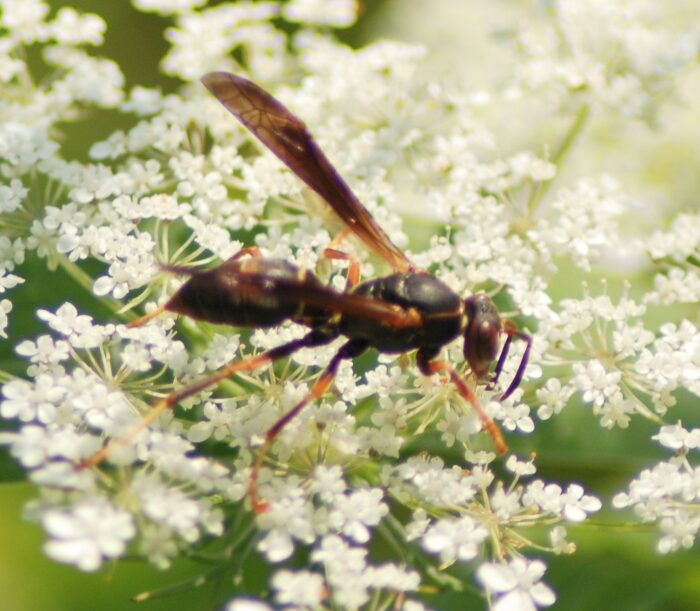
Tomatoes are our best-loved summer vegetables. Some gardeners judge their horticultural skills entirely by the size, taste, and productivity of their tomatoes. The secret to impressive achievements usually comes down to these fundamentals: choosing varieties that do well in a given environment; rotating crops so the nightshades like tomatoes, peppers, and eggplant are not grown in the same spot two years in a row; incorporating compost into the soil for beneficial microbes; adding slow-release nitrogen and other nutrients like a bone meal for additional phosphorus; making sure tomato plants get plenty of water—about 1½ in. per week when they are actively growing, and hovering over plants as though they were newborn babies.
Actually, it may be the close attention paid to tomato plants that really make the difference. With regular observation, good gardeners catch potential problems before they become severe. By hand-picking, squashing, or pruning off insect pests, they’re not likely to multiply beyond control. Keeping branches off the ground by tying them up or clipping them off discourages ground-living pests like sowbugs, slugs, and snails from bothering plants.
There are several ways to help beneficial insects flourish
Probably the most important step in protecting tomatoes from insect pests is to avoid conventional all-purpose insecticide sprays in your garden that may harm spiders and beneficial insects. These small creatures are our biggest allies in the battle against pests.
The more diverse the insect and spider fauna in the garden, the better pest control you will have. Small-flowered ornamentals help by providing nectar and pollen to the tiny beneficials. Plants that support beneficial insects include sweet alyssum, ageratum, flowering buckwheat (Ammi majus), dill, fennel, flowering carrots, and almost any plant with daisylike flowers.
|
|
|
|
|
|
|
|
|
Deep loose mulches encourage pest-eating spiders, especially the hunting spiders that hide by day and come out at night. Bare, the cultivated ground is the least attractive to spiders because it does not afford the moist, dark hiding places with protection from temperature extremes that they need during the day.
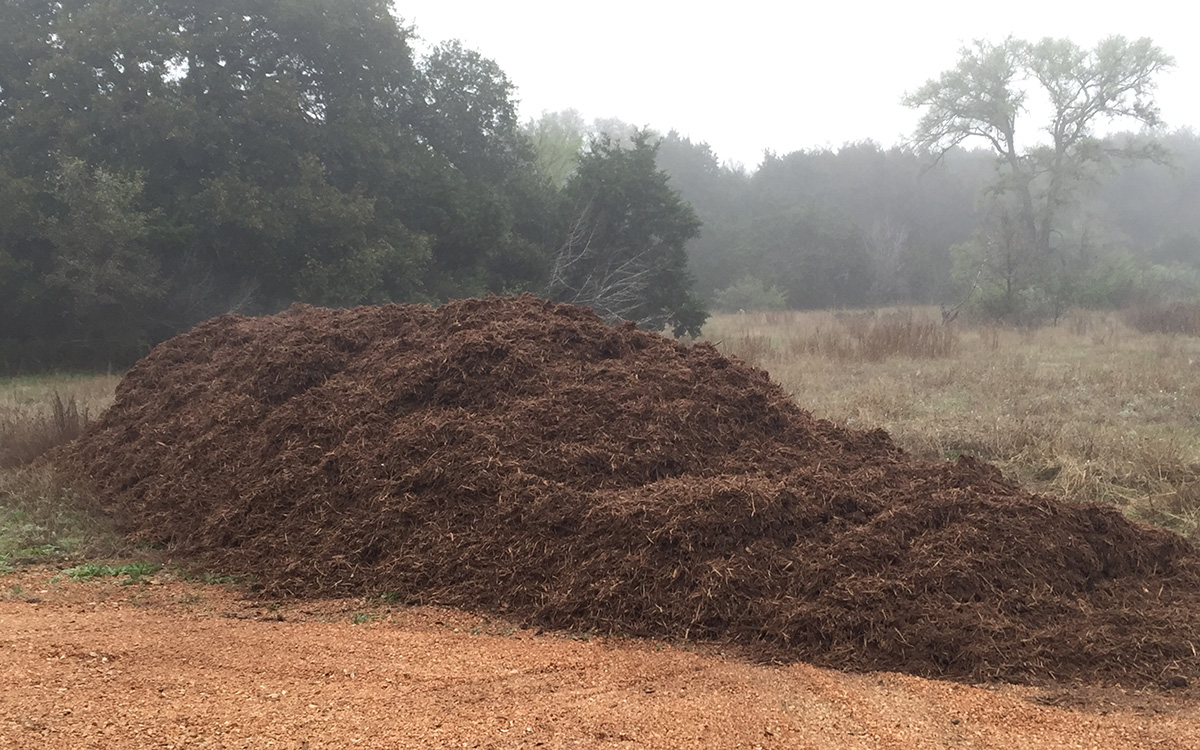
Rely on spiders to eat up thrips
Thrips are small insects that rasp off tomato leaf surfaces, often causing a change in color. Their small, black fecal spots are sometimes noticeable, too. Thrips are as small as a hyphen on the printed page, the young being white, yellow, or translucent, and the adults dark to the naked eye. They tend to cluster on the undersides of leaves along the veins. In addition to damaging plants, thrips can also spread nasty tomato pathogens.
It wasn’t until we began going out in the garden at night with a flashlight that we realized the truly great impact spiders have on thrips. Holding the light beam parallel to the plants revealed dozens of fine spider webs in our tomato plants. Each web held hundreds of captive thrips, with one tiny spider keeping watch. It was especially amazing because the webs and their victims were imperceptible in the daylight.
Often thrips infest tomato plants that are too dry. Simply increasing the number of water plants receive may reduce even large thrip populations to insignificant status. If that doesn’t do it, the same approach that works with aphids, whiteflies, and mites can be used with thrips—soapy water.
Insecticidal soap can help control aphids, whiteflies, and mites if beneficial insects can’t keep up
Yellowing, curling, or shriveling of leaves can be caused by these sucking insects. Give predatory insects and other natural controls a chance to catch up with early infestations of these pests. Prune off and compost heavily infested leaves while you are waiting. But if really young seedlings are heavily attacked, or natural controls are just not doing the job, use insecticidal soap to suppress these pests. Use soft water for mixing soaps; in a hard-water area, you can use a commercial water softener. Remember, you’re not trying to kill everything. Leave some pests alive so the beneficials will have something to eat when they arrive.
The hornworm is a most impressive caterpillar, but usually not the most damaging, despite its flamboyant appearance. There are several species of this caterpillar in the United States. All are large at 3 in. to 5 in. in length, and are green with stripes down the sides. A pointy red projection where you’d expect a tail on a mammal is the horn.
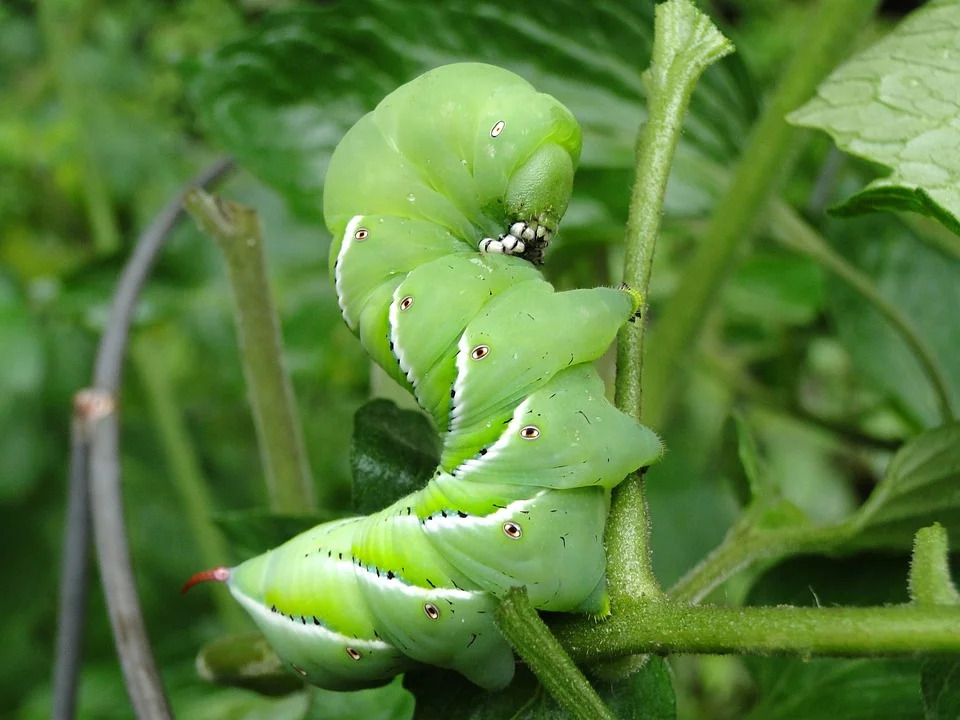
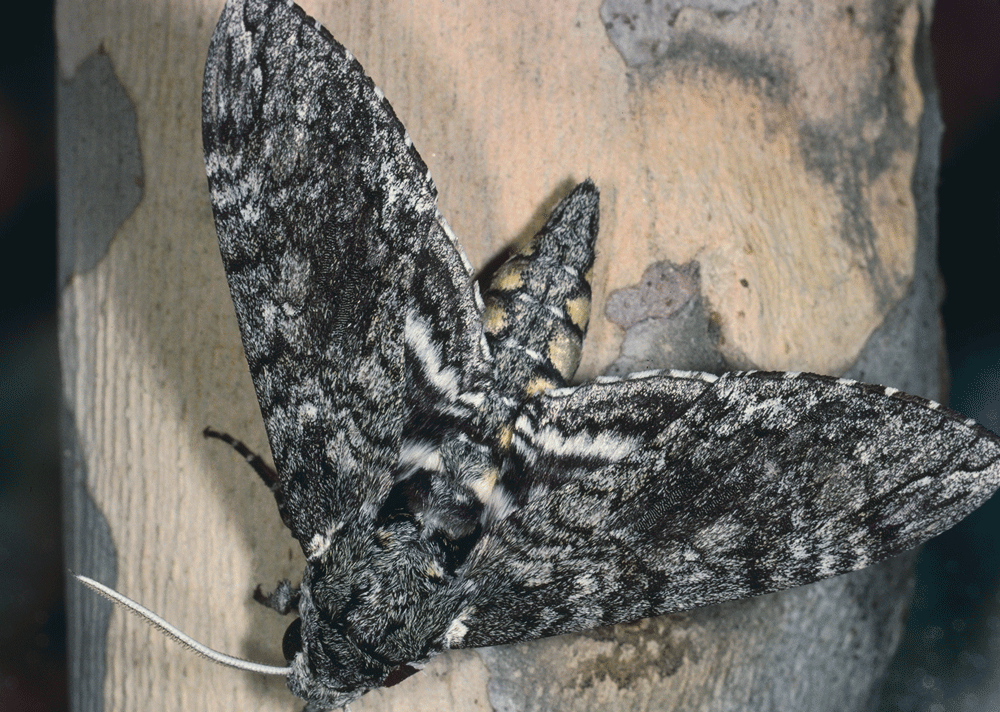
Hornworms are the larvae of hawk moths, very distinctive large night flyers. At dusk, they may be mistaken for hummingbirds supping at flowers. The moths lay round green eggs on the undersides of tomato leaves. The eggs hatch in about five days. In the South, there may be as many as four hornworm generations in the summer, but in more northern latitudes one generation per year is the norm.
Despite their large size, hornworms are remarkably hard to spot. You may guess they’re around if the top of a tomato plant is completely stripped of leaves. Another clue is their large fecal pellets, about the size of raisins, scattered in clumps on the leaves of interior stems. Look directly above the frass to find the caterpillar itself. Hornworms use their four pair of rear legs to hold onto leaves with a surprisingly strong grip. You can try pulling them off, but it may be easier to carry an old pair of scissors into the garden and snip the caterpillars in two, leaving the halves for predatory wasps to clean up. Or just snip off the leaf supporting the worm and drop it in a bucket of soapy water.
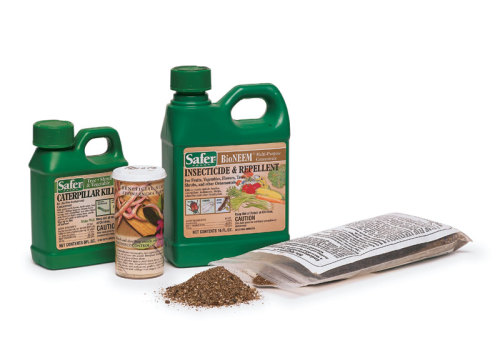
Like all the caterpillars mentioned in this article, hornworms are susceptible to Bacillus thuringiensis kurstaki, or Btk, a naturally occurring pathogen that causes disease in the larvae of both moths and butterflies, but does not harm their natural enemies. It is available commercially under a large number of trade names. The insects have to eat it to get sick, so thorough coverage of tomato foliage is essential. Bt powder comes as a living spore, so store it in a closed container in the refrigerator. Another Bt strain, Btt, is available to kill the larvae of the Colorado potato beetle, a pest of tomatoes in some areas. Although these are “low risk” pesticides, be sure to follow the label directions carefully.
Some years ago, we were checking the efficacy of one Bt strain on local hornworms. We drove out to a farmer’s field, collected 200 of the caterpillars in a large grocery bag, put it in the rear of our van, and started back to the lab. Barreling along the highway, we heard the strangest sound above the old van’s transmission whine. Glancing behind, we beheld hordes of hornworms staging a grand escape. Hundreds of little caterpillar legs, ringed with stiff hairs, were making their patient way up the sides and spilling out of the bag. It was a sound, and a sight, we’ll never forget.
Tomato fruitworms are truly damaging and may need a dose of Bt
They are also known as corn earworms when they bother corn. By either name, these worms are susceptible to Bt, as are most other caterpillars. Fruitworms feed on the tomato fruit itself, so a large infestation is worth treating. You may need to repeat Bt applications every 12 to 14 days since several generations can be present at the same time during serious outbreaks.
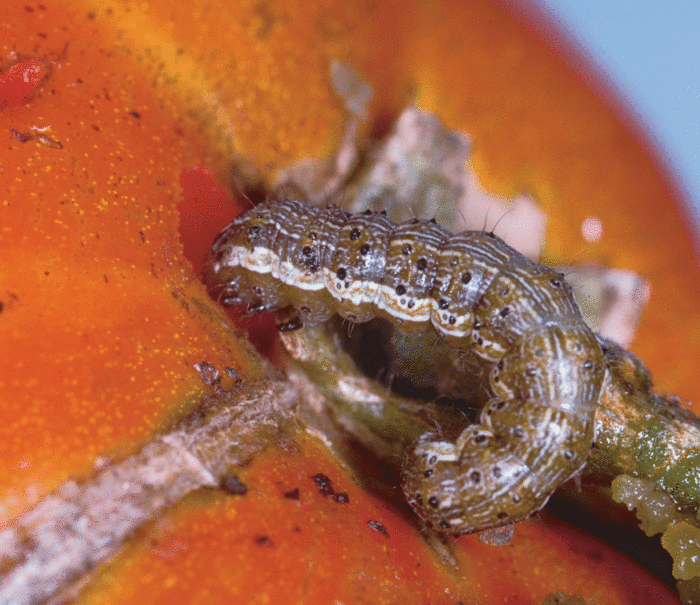
For Bt to work on tomato fruitworms, it needs to be sprayed on leaves before caterpillars have become large enough to move from the leaves and enter the fruit. Damaged or fallen fruits should be gathered promptly and composted.
Pinworms are the worst of the caterpillar pests because they may tunnel into tomato fruit near the stem before you are even aware they are around. Some may tunnel into leaves as well. Pinworms are primarily warm climate pests, so southern gardeners should check plants, looking for blotchy, translucent areas where these tiny miners are between the upper and lower layer of leaf cells. Remove infested leaves as fast as you notice them, crush the caterpillar in its burrow, and hot compost the leaves along with any infested tomatoes. Bt is also effective on pinworms.
Paper wasps may be the biggest tomato plant protector
If you aren’t afraid of insects and can bear to let large paper wasps live around your property, they will eagerly control many caterpillars for you, possibly eliminating the need to spray with Bt. Paper wasps, Polistes spp., build toadstool-shaped nests, hanging down from trees and outdoor beams and eaves. The adults are calm, never bothering you as you move around the garden. They busy themselves flying back and forth collecting caterpillars to feed to their young in the nest. We are pleased to have paper wasps and never disturb them. Learn to distinguish paper wasps from yellow jackets and hornets who are far more irritable and make poor companions for small gardens, although they all catch pests.
Get help from other predators
Look into buying and releasing the following beneficial insects for help with tomato pests. Orius spp., the minute pirate bug, has a big appetite for aphids, mites, thrips, and other pests. Orius can be released at any time in the growing season. Trichogramma spp. are minute wasps that attack caterpillar eggs. If you live where tomato caterpillar pests have several generations, then it is worth releasing Trichogramma when you notice high populations of caterpillars are present. If you garden in the north where only one generation per year is the rule and you had a problem the previous year with pest caterpillars, consider releasing Trichogramma early the following season to prevent a recurrence of the problem. Time the release when moths are laying eggs. Consult your county cooperative extension office for help in identifying which caterpillar species is present and when egg-laying begins. Suppliers can advise you on numbers to purchase and frequency of release for your size garden, crop, and locality.
|
|
|
Co-authors Sheila Daar, William Olkowski, and Helga Olkowski are directors of the nonprofit Bio-Integral Resource Center in Berkeley, California.
This article originally appeared in Kitchen Gardener #15.
Learn more
• Attract Beneficial Insects to Your Garden
• All About Tomatoes


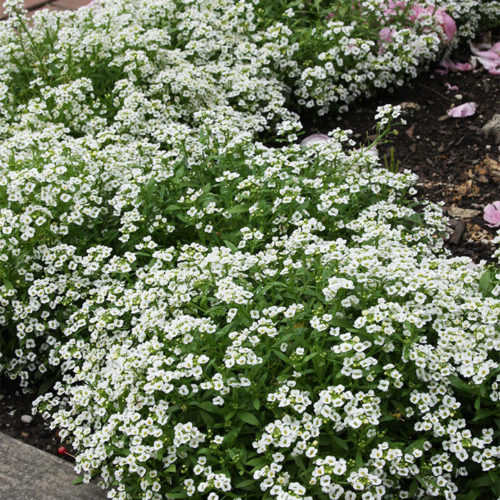



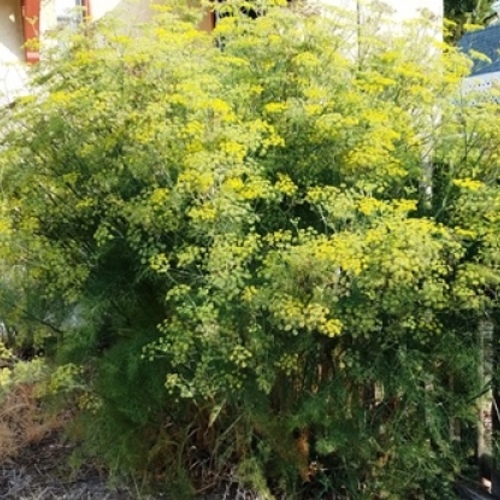

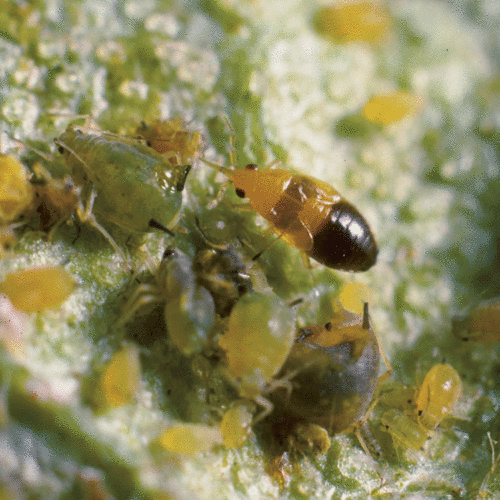
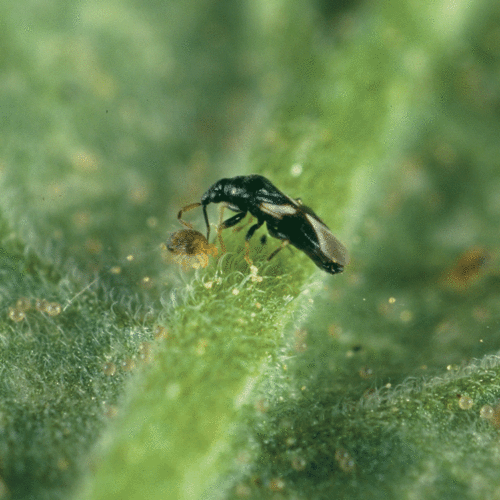



Comments
Log in or create an account to post a comment.
Sign up Log in